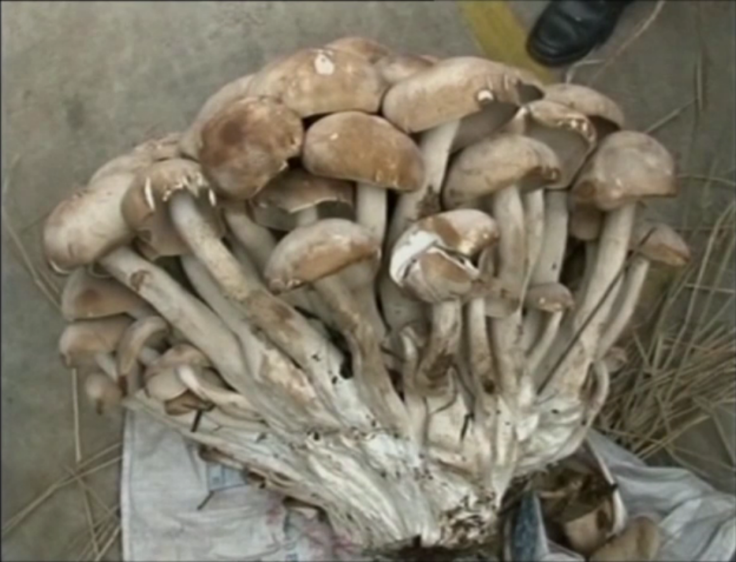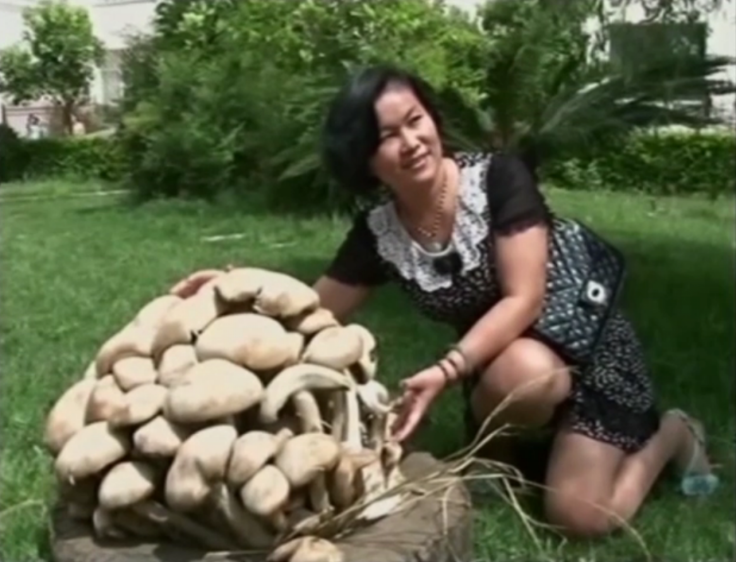World’s Largest Mushroom? Giant Fungus In China Weighs 33 Pounds [VIDEO, PHOTO]
A giant fungus found in China’s Puxiong Township has some wondering whether it’s the largest one in the world.
The 33-pound cluster of mushrooms that converge at their stems has gone viral. Video footage shows a man who found the fungus placing it into a car tire to be displayed in a village in southwest Yunan province. The heavy fungus contains more than 100 gray mushroom caps attached at the base of their stems and measures 8 feet in diameter, Britain's Telegraph reports.
"I guess this mushroom can be entered into the Guinness World Records," one woman said, as she took a photo of the mega mushroom.
The kind of fungus has yet to be determined, but the consensus is that it’s probably not safe to eat, the Daily Times Monitor reports.


The last mushroom to make headlines was discovered in an American forest. The honey mushroom, also known as the Armillaria ostoyae, covered 2,200 acres in Malheur National Forest, in eastern Oregon. Considered the “largest living organism ever found,” the fungus was identified after a scientist heard about a major tree die-off in the area. Using aerial photos, Catherine Parks, a scientist at the Pacific Northwest Research Station, collected 112 samples from fungus grown in the area and determined that more than half came from the same organism.
The only visible trace of the fungus are clumps that pop up during the fall when its rains, yet they cover the equivalent of 1,666 football fields. While the current claim has yet to be confirmed by the Guinness Book of World Records, scientists say they haven’t seen plant this large before.
“There hasn’t been anything measured with any scientific technique that has shown any plant or animal to be larger than this,” Gregory Filip, an associate professor of integrated forest protection at Oregon State University and an expert in Armillaria, told ABC News.
© Copyright IBTimes 2025. All rights reserved.





















